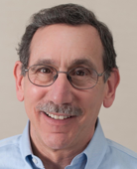Biography:Andrew Lees (vaccinologist)
Dr. Andrew Lees | |
|---|---|
 | |
| Born | Massachusetts , United States |
| Nationality | American |
| Education | Harvey Mudd College, Johns Hopkins University |
| Occupation | Vaccine chemist |
| Known for | Developing the CDAP conjugation method |
| Medical career | |
| Profession | Vaccinologist |
| Field | Biochemistry |
| Institutions | Fina Biosolutions |
Andrew Lees (born February 1953 in Massachusetts , United States) is an American vaccine chemist known for developing the CDAP conjugation method, used in vaccines manufactured by GlaxoSmithKline (Streptococcus pneumonia, Neisseria meningiditis ) and conjugate vaccines currently in clinical development by the Serum Institute of India and Chengdu Institute of Biological Products. Currently, Andrew Lees holds 25 patents in the area of conjugate vaccines.
Personal Background
Andrew Lees is the son of two scientists, Marjorie and Sidney Lees. He was born and raised in Newton, MA, except for four years in Hanover, NH. He lives in Silver Spring, MD, and is married to Julie Pierson Lees. They have two children.[citation needed]
Education
Lees graduated from Newton North High School in 1971 as school valedictorian. He received his Bachelors of Science in Chemistry from Harvey Mudd College in 1976. After receiving his undergraduate degree Lees attended Johns Hopkins University and completed his Ph.D. in biophysics in 1984.
Career
Early career
Lees was a post-doctoral fellow (1985-1988) in the laboratory of Dr. Howard Dintzis.[1] The work in the Dintzis’ lab centered on the Immunon model of the immune cell signaling around the synthesis of multivalent peptide constructs. He subsequently moved to the Uniformed Services University of the Health Sciences (Bethesda, MD) as a Research Instructor under Dr. Fred Finkelman and James J. Mond, although Lees’ laboratory work was in the National Institutes of Health Laboratory of Immunology headed by William E. Paul. There, under the guidance of Dr. John Inman, Lees learned bioconjugation, the linking together of biologically relevant molecules to increase their utility. In 1992, Lees set up his own lab at the Uniformed Services University and it was there that he developed the CDAP chemistry for use in conjugate vaccines. The chemistry was licensed to GlaxoSmithKline through the Henry M. Jackson Foundation. From 1993-1999, Lees was also part-time at Virion Systems, Inc. (Rockville, MD) . Lees was appointed Associate Research Professor (Department of Medicine) at USUHS in 1998 and the School cited his work in vaccines in his Meritorious Service Award (1999). From 1999-2006 Lees was Director of Macromolecular Sciences at Biosynexus, Inc.
Current Work
Lees started the biotech company Fina Biosolutions LLC in 2006, where he currently serves as the CEO and Chief Scientific Officer. He was appointed an Associate Professor of Medicine at the University of Maryland School of Medicine Center for Vaccine Development in 2010. He also teaches biochromatography at the University of Maryland (College Park, Maryland)
Other Notable Endeavors
Lees worked as a magician while a graduate student at Hopkins and was featured on the cover of Baltimore Magazine, “84 People to Watch in ’84”. He successfully lobbied the Baltimore City Council, with tactics including a magic performance, resulting in a law that exempted restaurants employing “single roving performers without the use of musical instruments” from the entertainment tax.
Awards
- 1999 - Meritorious Service Award, Uniformed Services University of the Health Sciences
- 2015 - “Outstanding Alumni” award, Harvey Mudd College.[2]
Most Notable Publications
- Lees, A., B.L. Nelson, and J.J. Mond. Activation of soluble polysaccharides with 1-cyano-4-dimethylaminopyridinium tetrafluoroborate for use in protein-polysaccharide conjugate vaccines and immunological reagents. Vaccine 14:190, 1995
- Shafer, D.E., B. Toll, R.F. Schuman, B.L. Nelson, J.J. Mond and A. Lees. Activation of soluble polysaccharides with CDAP for use in protein-polysaccharide conjugate vaccines and immunological reagents. II. Selective crosslinking of proteins to CDAP-activated polysaccharides. Vaccine. 18:1273, 2000.
- Shafer, D. E, J. K. Inman, and A. Lees. Reaction of tris(2-carboxyethyl)phosphine (TCEP) with maleimide and -haloacyl groups: Anomalous elution of TCEP by gel filtration. Anal. Biochem. 282:161, 2000.
- Lopez-Acosta, A., G. Sen and A. Lees. Versatile and efficient synthesis of protein–polysaccharide conjugate vaccines using aminooxy reagents and oxime chemistry. Vaccine, 24:716, 2006.
- Lees, A., V. Puvanesarajah and C.E. Frasch. Conjugation Chemistry. Pps 163-174 Pneumocococcal Vaccines: The Impact of Conjugate Vaccines. Eds G.R. Siber, K.P. Klugman and P.H. Makela. ASM Press, Washington DC. 2008
References
- ↑ http://www.mhhe.com/biosci/genbio/raven6b/graphics/raven06b/howscientiststhink/16-lab.pdf; M. A. Naughton, H. M. Dintzis (1962) Sequential biosynthesis of the peptide chains of hemoglobin, Proc. Natl. Acad. Sci. U. S. A. 48, 1822–1830.
- ↑ "Alumni Association Honors Mudd Alumni". Harvey Mudd College. https://www.hmc.edu/about-hmc/2015/02/12/alumni-association-honors-mudd-alumni-friends.
